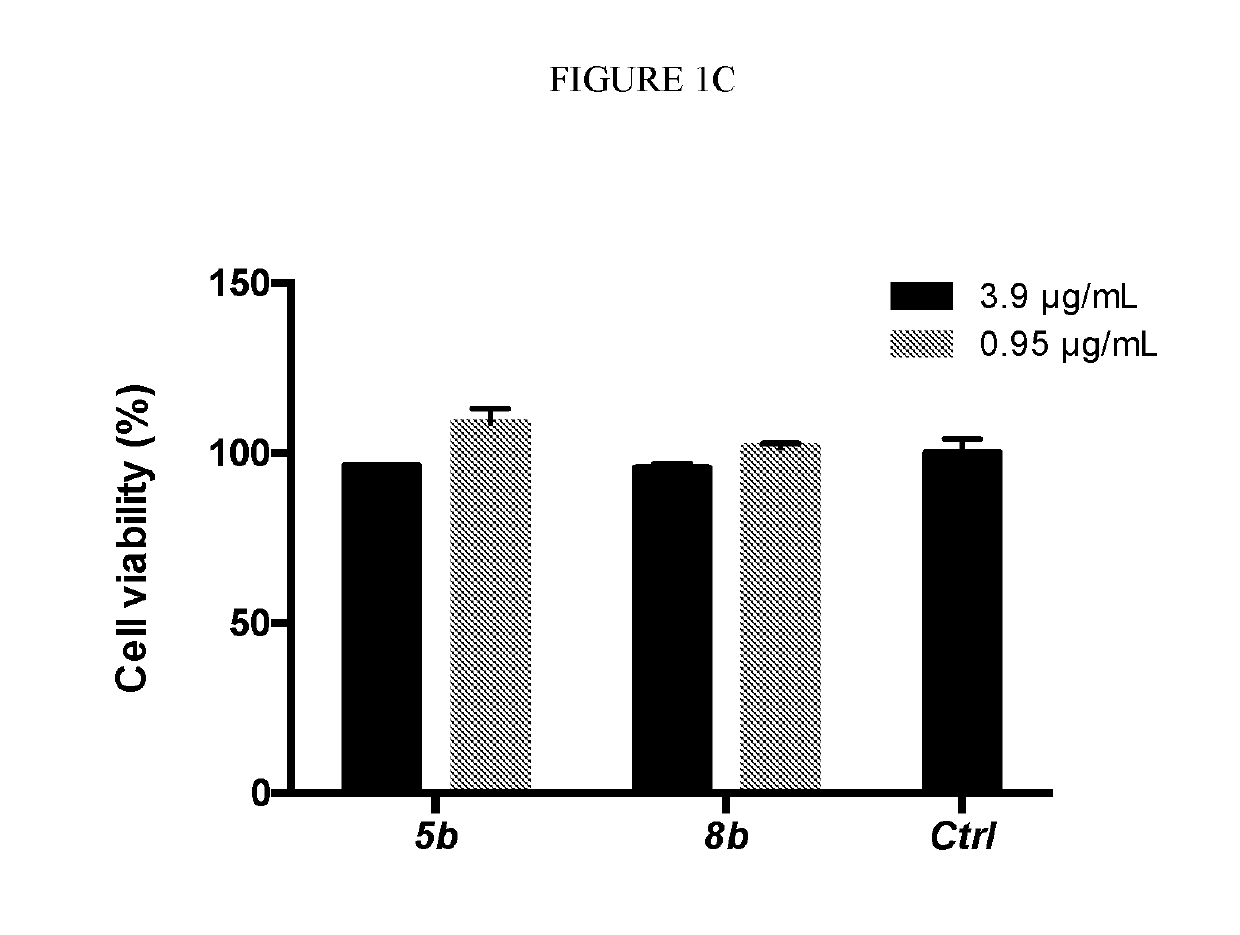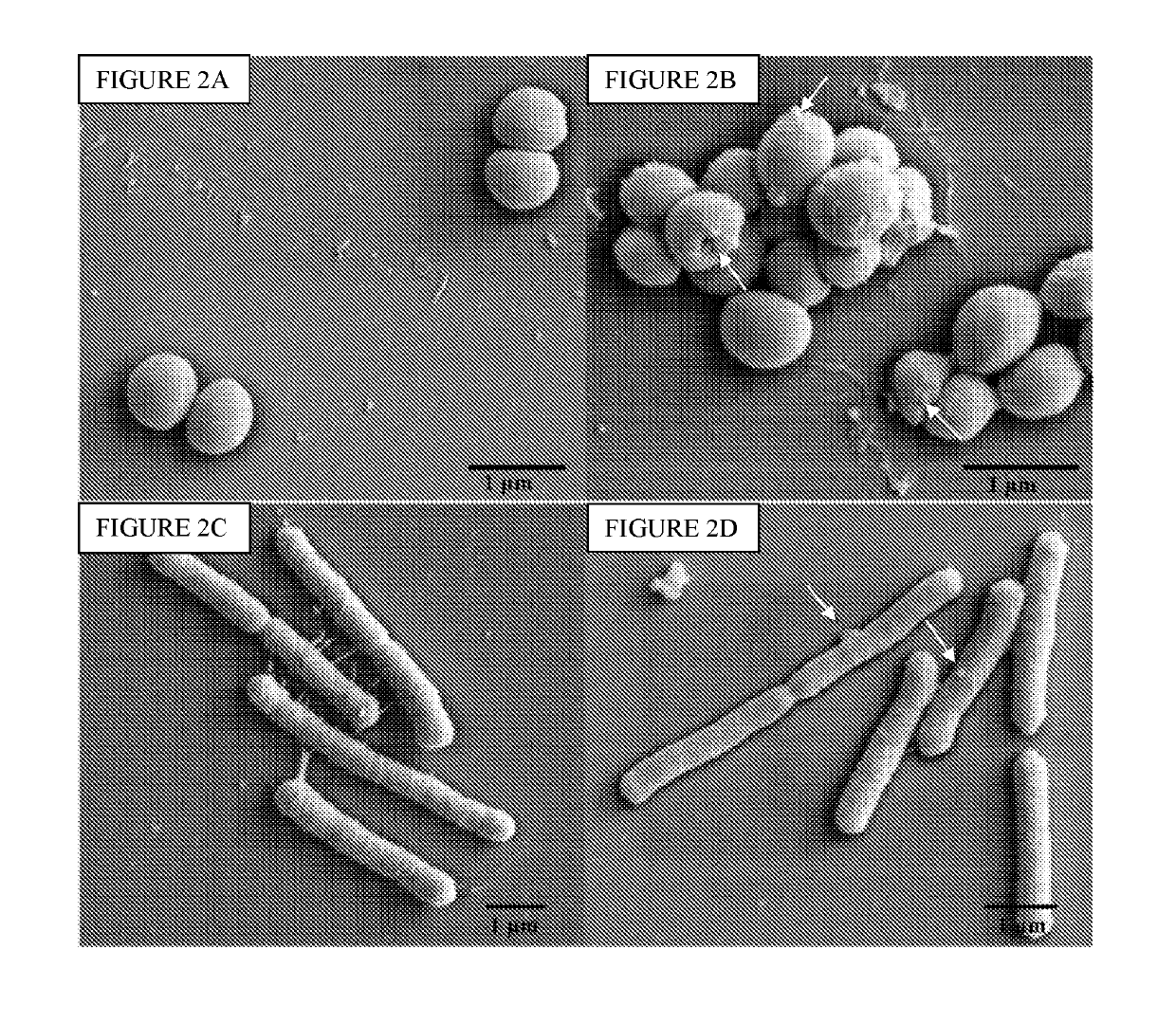Antibacterial agents
- Summary
- Abstract
- Description
- Claims
- Application Information
AI Technical Summary
Benefits of technology
Problems solved by technology
Method used
Image
Examples
example 1
[0479]Using antimicrobials to combat infectious diseases has been a common practice since the 1940s. However, the emergence of multidrug-resistant bacteria due to overuse and misuse of antimicrobial agents has become a severe threat to public health. Compared to conventional antibiotics which target a specific biochemical process (e.g., DNA synthesis, protein synthesis) or molecule (e.g., enzyme), naturally occurring antimicrobial peptides (AMPs), as part of innate immune defense, have received substantial interest owing to their broad-spectrum activities, minimum cytotoxicity against host cells, and unique cellular membrane targeting mechanism. The lack of a specific cellular target reduces the likelihood of developing resistance from a genetic mutation(s), and thus, AMPs hold great potential for the treatment of microbial infections as antibiotics alternatives.
[0480]Despite diverse primary peptide sequences and secondary structures displayed by AMPs, two characteristics they share...
example 2
[0557]As shown in the experiments discussed in Example 1, as well as in the experiments described below, the compounds of the invention are efficacious towards both platonic cells and biofilms, including compound 5b. Specifically, compounds 5b and 8b were tested for their ability to inhibit G. vaginalis (FIG. 4A) and L. monocytogenes (FIG. 4B) in pre-formed biofilms (see, FIG. 1A and Example 1 for synthesis of 5b and 8b). The minimal biofilm bactericidal concentration (MBC-B), defined as the minimum concentration of antibacterial agent that causes ≥3 log reduction in viable cell numbers compared to the positive control, was established for each compound. The MBC-B values of both 5b and 8b were approximately 31.25 μg / mL for G. vaginalis and approximately 250 μg / mL for L. monocytogenes, respectively. In contrast, the MBC-B of metronidazole and clindamycin (the commonly prescribed antibiotics) were 500 g / mL and 20000 μg / mL, respectively, for biofilm-associated G. vaginalis. Additionall...
example 3
Ether and Ester Cationic Amphiphiles Control Biofilm Formation by Bacterial Vaginosis Pathogens
Abstract
[0560]Bacterial resistance and recurrence of bacterial vaginosis (BV), a polymicrobial infection, justify the need for novel antimicrobials to counteract microbial resistance to conventional antibiotics. As described herein, two series of cationic amphiphiles (CAms), which are classified as supramolecular nanostructures with membrane-lytic properties, were designed with hydrophilic head groups and non-polar domains. The combination of CAms with commonly prescribed antibiotics is suggested as a promising strategy for targeting microorganisms that are resistant to conventional antibiotics. Activity of the CAms against Gardnerella vaginalis, a BV representative pathogen, ranged from 1.1-24.4 μM. Interestingly, the tested healthy Lactobacillus species, especially L. plantarum, were significantly more tolerant to CAms compared to the selected pathogens. In addition, CAms prevented biofi...
PUM
| Property | Measurement | Unit |
|---|---|---|
| Molar density | aaaaa | aaaaa |
| Molar density | aaaaa | aaaaa |
| Molar density | aaaaa | aaaaa |
Abstract
Description
Claims
Application Information
 Login to View More
Login to View More - R&D
- Intellectual Property
- Life Sciences
- Materials
- Tech Scout
- Unparalleled Data Quality
- Higher Quality Content
- 60% Fewer Hallucinations
Browse by: Latest US Patents, China's latest patents, Technical Efficacy Thesaurus, Application Domain, Technology Topic, Popular Technical Reports.
© 2025 PatSnap. All rights reserved.Legal|Privacy policy|Modern Slavery Act Transparency Statement|Sitemap|About US| Contact US: help@patsnap.com



